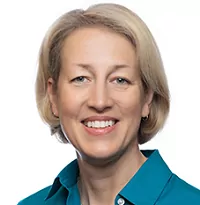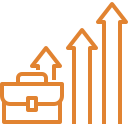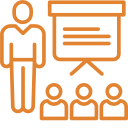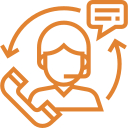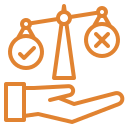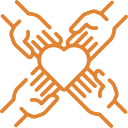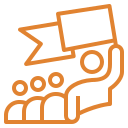Like with many things in life and in work, there’s no one right way to go about this: it’s all in your execution. There are several factors to consider as you make your decision, not the least of which is your organization’s approach to change and current use of Agile methods.
Does your software development or IT team use Agile methods? If they do, then you can leverage the momentum and success that they have with Agile in your own change management efforts, both with your team and with your stakeholders. Agile in learning design works somewhat different from Agile in software development, but the values and principles are the same, and many of the techniques are similar enough. In fact, you may want to skew your own L&D practices toward the successful practices of your Agile software teams, use the same terminology, and learn together to make the most of this organizational momentum. Get support from your colleagues in IT as you begin your journey.
If your software development department doesn’t use Agile methods, or if your organization doesn’t have one, never fear. Chart your own path forward.
One Big and Splashy Leap
If you choose to make your Agile transition on a big and visible project, you get the benefit of lots of leadership attention and often the people and financial resources that come along with it. You may be able to bring in formal training, Agile coaching, and experts to guide you along the way. Often, big strategic projects come with a “must win” attitude and the corresponding goal alignment and energy. Business sponsors are engaged, and all eyes are on the project.
This is a logical choice for organizations with a higher tolerance for risk, an eager team, an environment of uncertainty that’s driving new innovation, and an existing comfort level with Agile methods. This approach also calls for a high degree of critical thinking and communication about what you’re doing and what you’re producing so that any needed course corrections can be made early. (we recommend free critical thinking courses).
Incremental Steps Toward Change
At the other end of the spectrum are small projects and incremental changes toward a full-on Agile approach. This allows the team and the business to try something new, observe what happens, make changes as needed, and solidify one new approach before moving on to the next. Perhaps a small and eager team takes on a well-bounded project as the first foray into Agile. They’ll “work out loud,” sharing what they’re doing and what they’re learning with their colleagues so that everyone can learn together. The team learns valuable new skills that can be applied to future larger, riskier projects.
Another approach is to implement a small number of Agile techniques while keeping other tried and true approaches in a steady state, at least for now. This allows the team to address needed process gaps, get comfortable with quick wins, and gradually embrace a new way of working.
Either of these smaller scale approaches are good choices for organizations with little tolerance for risk, reluctant teams and business sponsors, a comfort level with current successes that makes innovation difficult, or reluctance or lack of awareness about Agile methods. With a small scale approach to implementation, you may not even need to communicate to SMEs or business sponsors what you’re doing or that it’s called “Agile” – it might simply fall under the umbrella of process improvement.
Regardless of which path you choose – one big leap or small incremental steps – most Agile practitioners would suggest you start with a new project or one that’s reached a major milestone and a logical pause in the flow of work. This enables everyone to embark on the new project with the new mindset and methodologies, and you won’t have to carry the baggage and leftover work from a prior go at things.
There are multiple right answers along this journey towards embracing Agile methodologies in the L&D context. Whether opting for a bold leap with a large and visible project or taking incremental steps with smaller endeavors, each approach bears its own merits and challenges. Your decision is dependent on your organizational context. Organizations with an appetite for risk and a zeal for innovation may find the grand entrance of a significant project to be fitting, offering ample resources, leadership attention, and goal alignment. On the other hand, those preferring caution and a steady progression may choose the gradual route, fostering a learning environment and applying new techniques step by step. Whichever path is chosen, learning and adaptability remain at the heart of a successful Agile transformation.



